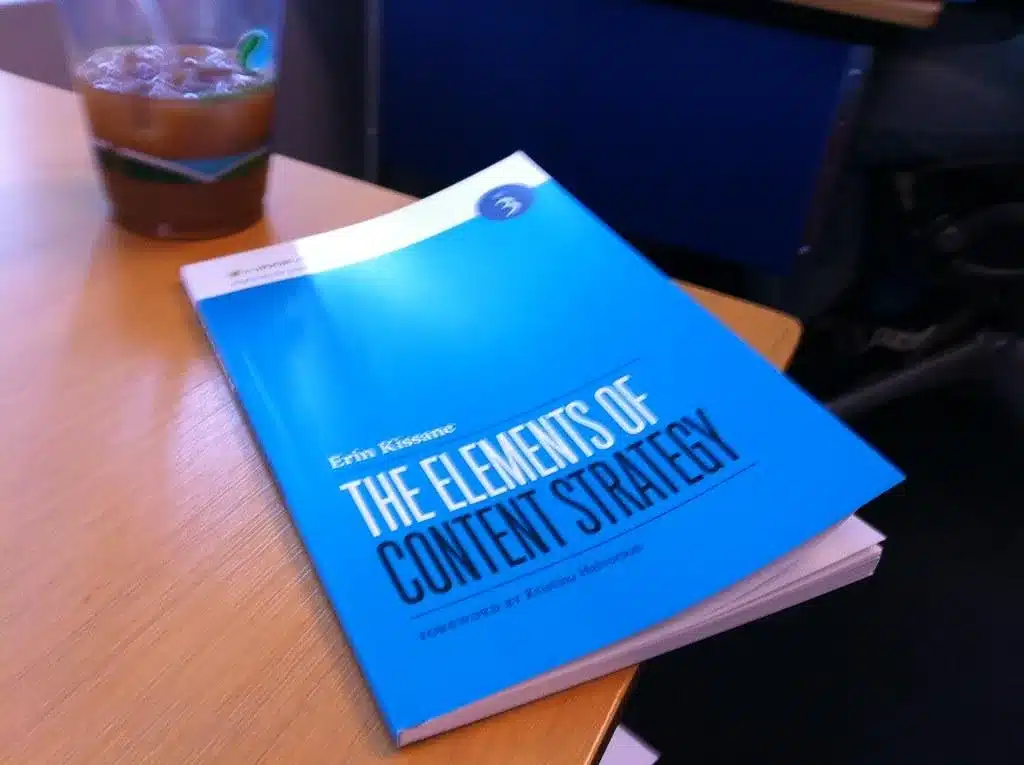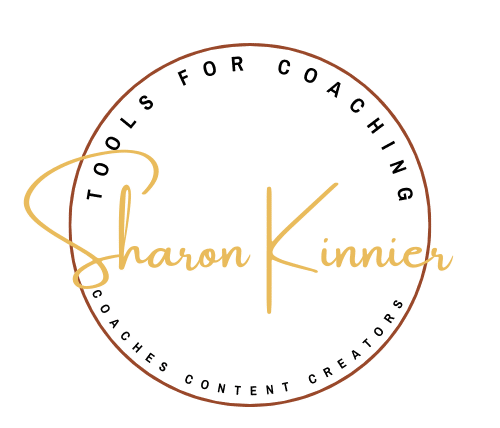Getting Started with PLR: The Essential Beginner’s Guide
Are you tired of constantly creating new content for your website or social media platforms? Have you considered using PLR as a solution to your content creation woes? If you're new to the world of PLR, it can be overwhelming and confusing.
I'm Sharon, and let me tell you, I'm absolutely obsessed with PLR. It's been my passion for years, and I've dedicated myself to talking about it, writing about it, repurposing it, and even creating my own PLR. I've amassed a wealth of knowledge on the subject, and I'm thrilled to share it with you right here. Get ready to dive deep into the world of PLR with me!
This beginner's guide will provide you with all the essential information you need to get started with PLR and take your content creation game to the next level. Do not fear, this guide will be easy to follow. So let's dive in and explore the world of PLR together!

What is PLR and Why Should You Care: A Beginner's Guide
Contents
- 1 What is PLR and Why Should You Care: A Beginner's Guide
- 2 Understanding the Benefits of PLR for Your Business
- 3 How to Choose the Right PLR Products for Your Niche
- 4 Tips for Customizing and Rebranding PLR Content
- 5 Understanding YMYL with Content for Financial or Health Related Websites
- 6 Maximizing Your ROI with PLR: Best Practices for Selling and Distributing
- 6.1 Choosing the Right PLR Products to Sell: Tips and Strategies
- 6.2 Creating a Strong Sales Funnel for Your PLR Products: A Step-by-Step Guide
- 6.3 Best Practices for Marketing Your PLR Products: From Social Media to Email Campaigns
- 6.4 Leveraging Affiliate Marketing to Boost Your PLR Sales: Dos and Don'ts
- 7 Potential Risks and Drawbacks on using PLR
- 8 Common Mistakes to Avoid When Using PLR: A Beginner's Guide
- 9 You May Be Wondering….
PLR, or Private Label Rights, as it is called is content that has been created by someone else and is being sold with the rights for you to use it as your own. As a beginner, understanding what PLR is and how it can benefit your business is essential. PLR products include various types of content such as articles, eBooks, videos, art, music, software, etc., which can save you time and money while fulfilling your business needs.
However, not all PLR products are created equal; some may be poorly written or outdated. That's why choosing the right PLR product from reputable sources should be a top priority for any smart marketer or entrepreneur.
Keep in mind that using PLR requires customization and rebranding so that it matches your brand personality before publishing on blogs or selling to customers. With careful consideration about using high-quality PLR, businesses can streamline their workflow while providing valuable content to their audience without sacrificing quality writing standards.

Understanding the Benefits of PLR for Your Business
PLR content has numerous benefits for businesses, especially those that don't have the resources to create original content all the time. One such benefit is cost-effectiveness; buying PLR content is cheaper than hiring a professional copywriter to create custom content. It's also convenient since you can access quality pre-written material on any topic in your niche with just a few clicks.
Another key advantage of using PLR is the ability to save time and effort. Instead of starting from scratch, you can use pre-existing articles or eBooks as building blocks for your own work: rebranding them with your unique voice or adding additional information specific to your audience makes it quick and easy.
PLR provides an opportunity for businesses to fill in gaps within their marketing strategy without breaking the bank. By outsourcing some of their writing needs through this method you can improve your brand's image while still maintaining an active online presence at affordable rates.
How to Choose the Right PLR Products for Your Niche
When choosing PLR products for your niche, there are a few key factors to consider. First and foremost, make sure the content is relevant to your audience and aligns with your business goals. Look for high-quality PLR that has been well-researched and written by experts in the field. Also, check if the creator gives you rights to modify or rebrand the content.
Consider the format of the PLR product as well. Will it be easy to customize? Is it available in multiple formats such as text, audio or video? When possible, choose products that offer flexibility so you can repurpose them across various platforms.
Another important aspect is evaluating whether the PLR vendor provides support for their products. Check if they have an active customer support system or a community forum where you can seek clarifications when needed.
Lastly, don't forget about pricing when selecting PLR products. While price shouldn't be the deciding factor alone but compare prices from different vendors while considering other aspects like quality before making a decision on purchasing any PLR product.

Tips for Customizing and Rebranding PLR Content
When using PLR, it's important to customize and rebrand the content in order to make it truly yours. One of the first things you should do is change the title of the content. This will not only make it unique but also more appealing to your audience. You can also add your own personal touches such as stories or examples relevant to your niche.
Another way to customize PLR content is by adding images or graphics that align with your branding. This will help reinforce brand recognition and create a cohesive look across all of your marketing materials.
It's also recommended that you double-check each piece of content for accuracy and relevance before publishing, especially if you plan on selling it as part of a product bundle or membership site.
Remember, effective customization can greatly increase the value of PLR products and help establish you as an authority in your niche.
Using PLR (Private Label Rights) content can be an excellent way to save time and resources when creating new content. However, it's crucial to select high-quality PLR and customize it to maximize its value effectively. Here are a few actionable tips and strategies:
Selecting High-Quality PLR:
- Reputable Sources: Always buy from reputable PLR providers. Research the provider's reputation, read customer reviews, and check out samples of their content before purchasing.
- Relevant Content: Choose PLR content that is relevant to your niche or industry. This ensures the content will resonate with your audience and meet their needs or interests.
- Quality Over Quantity: Don't be tempted by huge PLR packages with thousands of articles or pieces at low prices. The quality of the content matters more than quantity. Often, larger packages contain outdated or poorly written material.
Customizing PLR Effectively:
- Personalize It: Add your personal insights, experiences, and unique voice to the content. This not only makes the content unique but also adds value for your audience.
- Update It: Ensure the information is current and relevant. This could involve adding recent statistics, trends, or developments in your industry.
- Improve It: Look for ways to improve the content, such as adding images, infographics, videos, or other multimedia elements.
Maximizing Value in Various Niches or Industries:
- Repurpose Content: Convert PLR articles into different formats such as blog posts, eBooks, social media content, or podcasts to reach a wider audience.
- Create Lead Magnets: Use PLR content to create valuable resources like eBooks or whitepapers that can be used as lead magnets to grow your email list.
- Use as Bonus Material: Add value to your products or services by offering PLR content as bonus material. For instance, you could offer a free eBook (made from PLR content) to customers who purchase a certain product.
Remember, the key to using PLR content effectively is to treat it as a starting point. By taking the time to select high-quality PLR and customize it to suit your needs, you can provide valuable, unique content to your audience.

Understanding YMYL with Content for Financial or Health Related Websites
YMYL stands for “Your Money or Your Life.” It's a term coined by Google to categorize types of webpages that could potentially impact a person's future happiness, health, financial stability, or safety. This includes websites that provide information on financial transactions, medical or legal advice, and safety guidelines, among others.
Given the sensitive nature of the information, Google has higher content quality standards for YMYL pages. Therefore, if you're using PLR (Private Label Rights) content for financial or health-related websites, which fall under YMYL, it's crucial to carefully consider the quality and accuracy of the information.
Here are some potential risks and considerations:
- Content Accuracy: Since PLR content is often written in a generic manner to appeal to a broad audience, it may not have the specific, accurate details that YMYL topics often require. Information related to health or finance should be evidence-based and up-to-date.
- Lack of Expertise: The writers of PLR content may not have the required expertise in financial or medical matters. If used as is, this can lead to the dissemination of incorrect or harmful information.
- Ethical Considerations: Sharing information about health and finance carries a significant ethical responsibility. Misinformation can potentially harm your audience and can lead to legal implications.
To mitigate these risks, consider the following strategies:
- Verify Information: Ensure that any PLR content you use is accurate, up-to-date, and complies with current regulations and best practices in your industry. Cross-check facts and statistics with reliable sources.
- Seek Expert Input: If possible, have experts in the relevant field review and revise the content. This could be an in-house expert, a consultant, or a professional in the field.
- Customize Content: Customize the content to make it unique and more valuable to your audience. Add personal insights, case studies, or examples to make the content more engaging.
- Disclose Sources: Transparency builds trust. If you're sharing statistical data or a piece of advice based on certain research, provide references or links to the original source.
- Update Regularly: Laws, regulations, and best practices, particularly in health and finance, can change rapidly. Ensure that your content is updated regularly to reflect the most current information.
By taking these precautions, you can use PLR content effectively and ethically on YMYL websites while minimizing potential risks.
Maximizing Your ROI with PLR: Best Practices for Selling and Distributing
Choosing the Right PLR Products to Sell: Tips and Strategies
When it comes to maximizing your ROI with PLR products, it's important to choose the right ones to sell. Start by researching your niche and audience to identify their needs and interests. Look for high-quality PLR content that is well-written, informative, and targeted towards your audience.
Consider investing in exclusive or limited PLR rights to reduce competition and stand out from other sellers. Another strategy is to bundle related PLR products together for a higher perceived value.
Finally, don't forget the importance of proper marketing and distribution channels. Utilize social media platforms, email newsletters, and online marketplaces such as Amazon or Etsy to reach potential buyers. By following these tips and strategies you can increase your sales and ultimately achieve a higher ROI with PLR content.
Creating a Strong Sales Funnel for Your PLR Products: A Step-by-Step Guide
To maximize your return on investment (ROI) with PLR, it's important to create a strong sales funnel that can convert leads into customers. Start by offering a free lead magnet such as an e-book or checklist relevant to the PLR topic. Collect their email address in exchange and follow up with an automated email series promoting the PLR product. Use persuasive copywriting techniques highlighting the benefits of your PLR products, social proof, and scarcity tactics to drive conversions. Consider bundling multiple products together for added value at a discounted price. Lastly, promote your offer through targeted advertising campaigns on social media or Google AdWords.
Best Practices for Marketing Your PLR Products: From Social Media to Email Campaigns
When it comes to marketing your PLR products, there are a few key strategies that can help you maximize your ROI. First, make sure to leverage the power of social media by sharing your products on relevant platforms and engaging with potential customers. Additionally, consider creating targeted email campaigns to promote your PLR content to your email list. Another effective strategy is to offer limited-time discounts or bonuses to incentivize customers to purchase your products. Finally, don't forget the importance of creating high-quality sales pages and product descriptions that clearly communicate the value of your PLR content. By implementing these best practices, you can increase sales and grow your business with PLR.
Leveraging Affiliate Marketing to Boost Your PLR Sales: Dos and Don'ts
Affiliate marketing can be a powerful tool for maximizing your ROI with PLR. By partnering with affiliates, you can reach a wider audience and generate more sales. However, it's important to approach affiliate marketing strategically. Choose affiliates who are relevant to your niche and have a strong following. Provide them with high-quality promotional materials and offer competitive commission rates. On the other hand, avoid spammy or irrelevant affiliates who could damage your brand reputation. By leveraging affiliate marketing effectively, you can boost your PLR sales and take your business to the next level.

Potential Risks and Drawbacks on using PLR
While Private Label Rights (PLR) content can be a helpful tool in content creation, it's important to be aware of the potential risks and drawbacks associated with its use:
- Copyright Issues: While PLR content is typically created for resale and redistribution, there may be instances where unauthorized content is sold as PLR. This could potentially lead to copyright infringement issues. Always ensure that you purchase PLR content from reputable sources to avoid this.
- Duplicate Content: Since PLR content is sold to multiple buyers, the same content can end up on numerous websites if it is used as is. This can lead to duplicate content issues, which can have a negative impact on search engine rankings.
- Search Engine Penalties: Search engines, like Google, strive to provide users with unique, relevant, and high-quality content. If your website is filled with duplicate content or content of low value, this can lead to penalties that harm your site's search engine rankings.
- Reputation Damage: If your audience recognizes that your content is the same as that found on other websites, this could harm your reputation. It's important to provide unique, valuable content that is relevant to your audience.
- Irrelevant or Low-Quality Content: Not all PLR content is created equal. Some might be poorly written or irrelevant to your niche or audience. Always review and modify PLR content to ensure it meets your standards and serves your audience's needs.
- Generic Tone and Style: PLR content is often written in a generic style to appeal to a wide audience. This could potentially clash with your brand's voice and style, making the content seem out of place.
Despite these potential drawbacks, PLR content can still be a valuable resource when used wisely. Always customize the content to make it unique, relevant, and valuable to your audience. Also, be sure to follow SEO best practices and only purchase PLR content from reputable sources to avoid any copyright issues.
Common Mistakes to Avoid When Using PLR: A Beginner's Guide
Using PLR content can be a great way to save time and effort on content creation for your business. However, there are some common mistakes that beginners may make when using PLR.
The first mistake is not checking the quality of the content before purchasing it. Make sure to read reviews and samples before buying any PLR products. Another mistake is not spending enough time customizing and rebranding the content to fit your brand voice and style.
It's also important to avoid overusing the same PLR content repeatedly without making any changes or updates, as this can hurt your website's search engine rankings due to duplicate content.
Lastly, do not forget about proper attribution if required by the license you purchased. Always check what rights come with the product before using it.
By avoiding these common mistakes, you can get more out of your investment in PLR while ensuring that you produce high-quality content for your audience.






